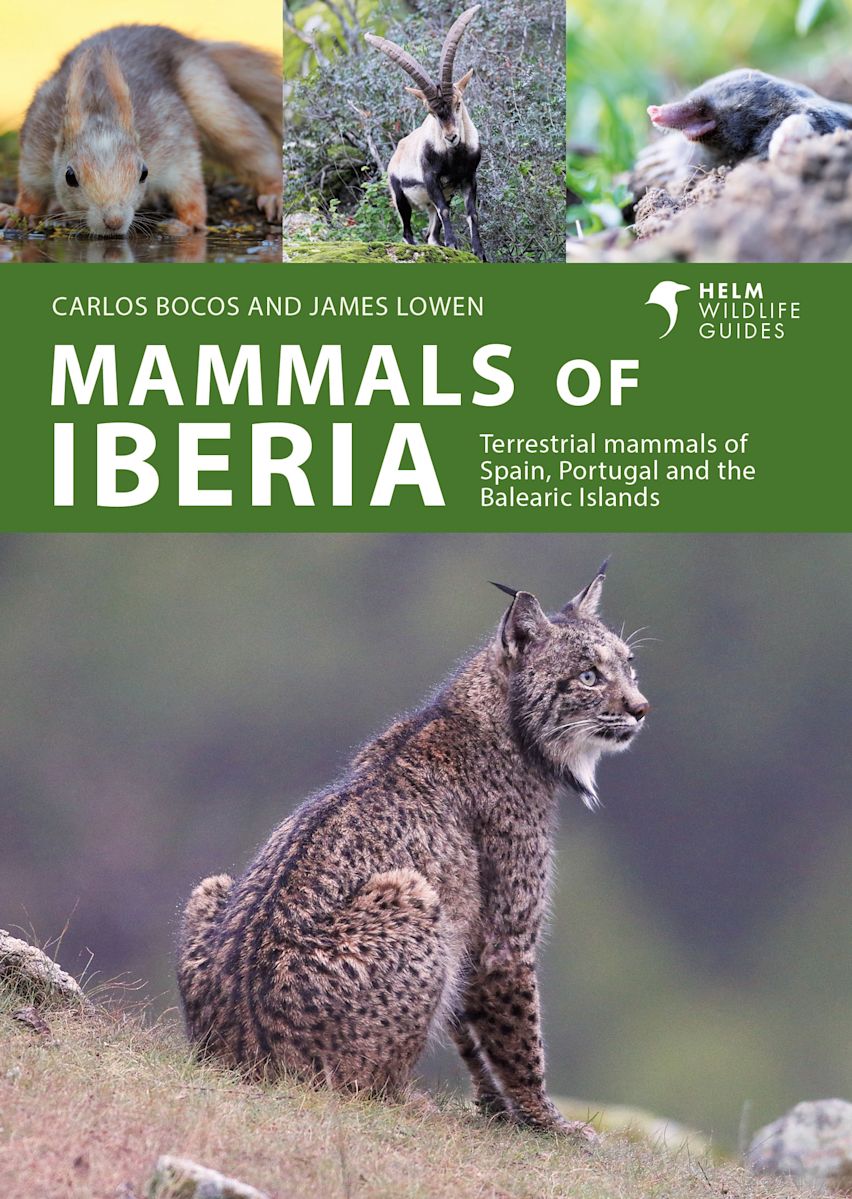
Review: The Mammals of Iberia by Carlos Bocos & James Lowen
I just received my copy of a new field guide, The Mammals of Iberia by James Lowen and our very own Carlos Bocos. And it is excellent, as you might expect from anything Carlos was involved in.
The guide covers all 99 terrestrial mammal species resident in Spain, Portugal and the Balearic Islands. It is packed with great photos (mainly from Carlos) and has information on sites to see each species as well as the sort of information mammalwatchers need to identify species in the field. Species accounts also include information on behaviour, habitat and activity periods. Plus there is practical guidance for finding wildlife, including an overview of some of the best locations, seven recommended mammalwatching itineraries and information on how to watch mammals safely, responsibly and effectively.

Carlos Bocos, mammalwatcher extraordinaire
I already reviewed the draft book when I wrote the foreword. So I am going to include that foreword again here … not least because I suspect no one ever reads forewords unless they are forced to!
When I started mammalwatching.com in 2005 I knew only a handful of people who shared my passion. There were no mammalwatching trip reports, few field guides and little – if any – information on how to find mammals in the wild. I looked with great envy at the wealth of material birders had at their disposal.
How quickly the world has changed.
This new mammalwatching guide from my good friend – and mammalwatcher extraordinaire – Carlos Bocos for the Iberian Peninsula is a great example of that change. Carlos has melded his birding expertise with his growing passion for mammalwatching to produce the sort of information that simply did not exist anywhere a few years ago. This is an invaluable guide for anyone visiting Spain or Portugal who is interested in seeing some of the peninsula’s rich mammalian fauna from the Iberian Lynx and Brown Bears through to the tiny Etruscan Shrew.
Mammalwatching is growing very quickly in popularity, driven by a revolution in our knowledge of where to look for different species and how to find them. Thousands of trip reports now point mammalwatchers in the right direction about where – and when – to look for many species. Better flashlights and new technology like thermal cameras mean mammals are easier to detect than ever. But finding them isn’t enough if we cannot identify them. As Carlos writes, it is still difficult to accurately identify many smaller animals – voles and shrews in particular – to species level in the field. But thankfully this too is changing. Largely, I suspect, because mammalwatchers look at the world differently to museum curators.
Most mammal field guides still contain lengthy species descriptions that refer to each species skull shape and dentition. All very well if you have a dead animal to dissect and a medical dictionary to hand, but information on zygomatic arches or palate ridges is not so useful for most mammalwatchers. And so I applaud Carlos’s decision not to “waste your time by providing tedious descriptions” of the characteristics of each species that cannot be noticed in the field. Instead he focuses on how to differentiate each species from those it might most likely be confused with. Of course some species remain very difficult to separate. But because of the efforts from Carlos and others, the mammalwatching community is getting much better at identifying small mammal species with confidence (as well as knowing when to be more cautious). This book provides valuable advice on how to do just that.
So if you are interested in seeing some of the many mammals in Spain and Portugal then grab this book, plan your perfect itinerary and start enjoy encountering some of the best mammalwatching in Europe (as well as some of the best food!).
This Helm Wildlife Guide is available from Bloomsbury Press and elsewhere. https://www.bloomsbury.com/us/mammals-of-iberia-9781399411943/
Post author


Leave a Reply
You must be logged in to post a comment.